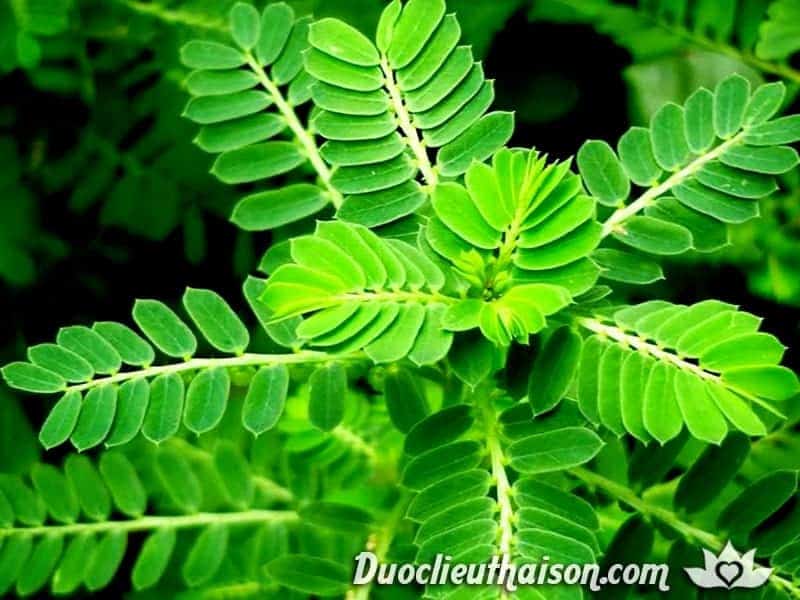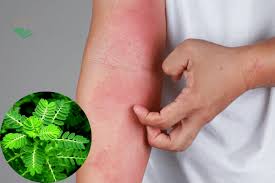9 unexpected effects of Phyllanthus urinaria (L.)

Phyllanthus urinaria (L.) has been used medicinally since 2000 years. According to the Chinese Botanical College Do Giam Ban (1972), Diep Ha Chau has the effect of cooling the liver and eyes, treating water edema, detoxifying the body, and dissolving the abdomen. Based on domestic and foreign researches, as well as experiences of many peoples around the world, it is possible to summarize some of the main uses of Phyllanthus urinaria (L.) as follows.
1. Support treatment of hepatitis:
This is one of the most interesting uses of Phyllanthus urinaria (L.). In 1982, Break Stone gained worldwide attention for its anti-hepatitis B virus activity. Clinical trials in children with infectious hepatitis with an Indian preparation containing Phyllanthus amarus have shown promising results. After 30 days of oral administration of Phyllanthus urinaria (L.) (900mg/day) 50% of the hepatitis B virus's blood transmissible factors (producing hepatitis B surface antibodies) were lost. Phyllanthus urinaria (L.) powder gives good results to hepatitis B patients when taking 900 - 2,700mg for 3 consecutive months.
Research from Japan and India in 1980 determined that the therapeutic effects of Phyllanthus urinaria (L.) in liver disease were due to phyllanthin, hypophyllathin and triacontanal.
In Vietnam, quite a few researches on the hepatitis treatment effect of Phyllanthus urinaria (L.) have been conducted, for example: the research group of Le Vo Dinh Tuong (Military Medical Academy - 1990 - 1996). had success with the preparation of Hepamarin from Phyllanthus amarus; research group of Tran Danh Viet, Nguyen Thuong Dong (Institute of Medicine) with Phyllanthin powder (2001).

2. Effects on the immune system:
In 1992, Japanese scientists also discovered the inhibitory effect of Phyllanthus niruri on HIV-1 growth through the inhibition of HIV virus replication. In 1996, the Institute of Pharmacology Bristol Myezs Squibb also extracted from Phyllanthus urinaria (L.) an active substance with this effect and named it "Nuruside".
3. Detoxification effect:
The Vietnamese, Indians, and Chinese people use Phyllanthus urinaria (L.) to treat boils, sores, nails, snake bites, and worms. People of Java, India used to treat gonorrhea. According to Malaysian folk experience, Phyllanthus urinaria (L.) can be used to treat skin inflammations, urinary tract infections, syphilis, vaginitis,... Research work at the Institute of Medicinal Materials - Vietnam ( 1987 - 2000) showed that when administered at a dose of 10 - 50g/kg, Phyllanthus urinaria (L.) had acute anti-inflammatory effects on laboratory mice.
4. Support treatment of digestive tract diseases:
Medicinal plants have the ability to stimulate appetite, stimulate bowel movements. The Indians used to treat hepatitis, jaundice, dysentery, constipation, typhoid, colitis. People in Haiti, Java use this medicinal plant to treat stomach pain, digestive disorders, ..
5. Effects on respiratory diseases:
The Indians use Phyllanthus urinaria (L.) to treat cough, bronchitis, bronchial asthma, tuberculosis,. ..
6. Pain relief effect:

Kenneth Jones and Brazilian researchers have explored the potent and sustained analgesic effects of several species of Phyllanthus, including Phyllanthus urinaria (L.). The analgesic effect of Phyllanthus urinaria (L.) is 4 times stronger than indomethacin and 3 times stronger than morphine. This effect has been shown to be due to the presence of gallic acid, ethyl ester and steroid mixture (beta sitosterol and stigmasterol) present in Phyllanthus urinaria (L.).
7. Diuretic effect:
Traditional medicine in some countries has used Phyllanthus urinaria (L.) as a diuretic and treatment for edema. In Vietnam, Phyllanthus urinaria (L.) was used the earliest at the Hanoi Institute of Oriental Medicine (1967) in the treatment of cirrhosis and ascites.
8. Support treatment of gallstones, kidney stones:

Some aboriginal tribes in South America use DHC to treat gallstones and kidney stones. The magicians have used the special ability of DHC to dissolve stones in gallstones and kidney stones, so they have named it lithotripsy. In the Witch Doctor's Apprentice, a book published since 1961, written about the healing secrets of the Indian magicians in the Amazon jungle.
A study by the University of Pharmacy Santa Catarina (Brazil-1984) has found an alkaloid of Phyllanthus urinaria (L.) (phyllan thoside) has antispasmodic effects on skeletal and smooth muscle, scientists have relied on This is to explain the effectiveness of medicinal plants in treating kidney stones and gallstones.
9. Good for diabetes:
The hypoglycemic effect of Phyllanthus niruri was concluded in 1995, blood sugar was significantly reduced in diabetic patients when given this drug for 10 days.
Translated from https://suckhoedoisong.vn/10-tac-dung-khong-ngo-cua-diep-ha-chau-169131149.htm


